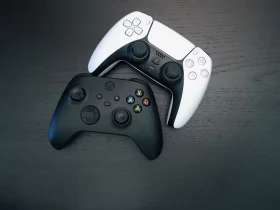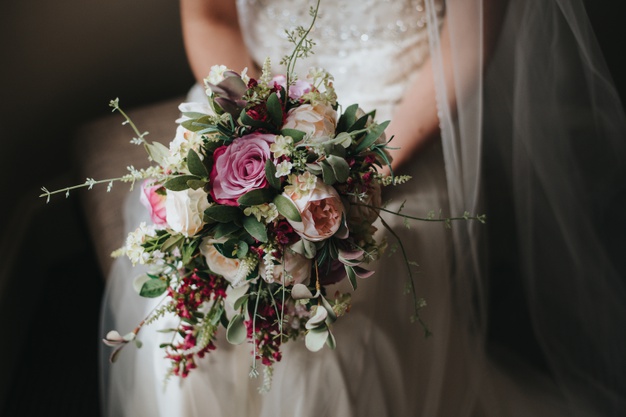While the trends might go back and forth, flowers are a basic piece of weddings-and understandably. In addition to the fact that they are pretty to check out (and a centuries-in length wedding custom), they permit you to express your personal style and innovativeness. Working with your wedding florist is fun and significant piece of the arranging process, yet in the event that you don’t have any idea how to pick wedding flowers or where to try and start, the task may feel less like a walk in the park and more overwhelming than you’d like. As of now have a couple of most loved blooms as a top priority? There are several different things you should consider when it’s an ideal opportunity to pick your wedding flowers, such as spending plan, colors, and style, so make certain to brush up on the basics here. Follow these eight steps to begin.
1. Make a spending plan for your wedding flowers.
This is the first and most significant step for how to pick wedding flowers. Your general wedding financial plan will decide how much cash you can set aside for your flowers, alongside the types of flowers you can use in your arrangements, so sit down with your accomplice and conclude what you’re both open to spending. Most couples spend around eight percent of their complete wedding financial plan on flowers, however, that number can fluctuate contingent upon the types of flowers and Flower basket you request and the number of arrangements you really want. A greater spending plan will take into account more intricate designs and pricier flowers while focusing on specific types of vegetation wedding ideas or other botanical accents can be a lovely and cost-viable choice for couples with more tight budgets.
2. Track down a wedding florist.
You’ll need to track down flowers that fit your shading scheme, season, and spending plan, and employing the right wedding florist will assist you with doing all of that and that’s only the tip of the iceberg. It’s essential to observe a florist who understands what you need because the individual is the person who will rejuvenate your vision. They’ll also be a lifesaver with regards to giving professional contribution about your wedding flowers and assisting you with settling on difficult decisions, such as choosing between garden roses and peonies. While you’re researching possible florists, look at their previous work and read reviews to get a sense of their style and their specialties (no two florists are indistinguishable!).
3. Accumulate wedding flower inspiration.
Start by brushing up on wedding flower trends, or browsing photos from real weddings and Pinterest. You may observe decorative designs that you absolutely love (and can show the pictures to your florist) yet at any rate, you’ll foster an overall sense of your likes and dislikes. Start making notes about your botanical preferences, including shading, shape, surface, and style. Try not to be hesitant to source inspiration from unforeseen places, all things considered! Re-watch your beloved wedding-themed film, scope out the fresh flower section at your neighborhood market, or ask your relatives about the flowers they used at their weddings. As long as you can share your overall vision with your florist, the individual in question will take it from that point and can suggest their ideas for your wedding flowers.
4. Know the basics of wedding flowers.
You don’t need to turn into a short-term master on wedding flowers, however on the off chance that you don’t definitely know some of the basic blooms, it tends to be useful to do a touch of research prior to meeting with your florist. While you’re gathering botanical inspiration, pause for a minute to get to know famous wedding flowers (roses, peonies, hydrangeas, lilies, and ranunculuses, to give some examples). Also conclude whether or not you need fragrant blooms-lilacs, freesias, peonies, jasmine, sweet peas, and gardenias are among the most perfumed wedding flowers. Knowing a touch of flower language will prove to be useful while you’re conversing with your florist, and you won’t feel totally lost while they’re sharing their ideas for your arrangements.
It can also be useful to share any botanical trends you do or don’t like-for instance, would you say you are infatuated with the boho energy of pampas grass or is it absolute off limits for your wedding day? Assuming there’s a flower or plant life that is untouchable, make certain to fill your florist in on your preferences.
5. Use your wedding shading range.
Assuming you’re having a totally stumped outlook on your wedding flowers (we realize there is a great deal to choose from!), think about them in terms of shading to help tight down your choices. Dahlias, carnations, mums, roses, tulips, and lilies are just a couple of the flowers that come in most colors. Different flowers, including peonies, lisianthus, hydrangeas, and anemones have a more restricted shading selection.
Your wedding flowers don’t need to be a precise coordinate with the rest of your style, yet you should attempt to choose blooms that supplement your shading range. Check out the colors being used for your greeting suite, clothing, table linens, and miscellaneous accents. On the off chance that you truly do need the flowers to be an ideal shading match, be as specific as possible while discussing them with your florist-“coral pink” to you may mean light orange or blush to someone else. Give paint chips, texture swatches, and photos of the stylistic theme so your florist can track down the closest possible match.
6. Start with your wedding flower bouquet(s).
In the event that you or your fiancé(e) is conveying a wedding flower bouquet down the aisle, use that as a starting point for how to pick wedding flowers. Your flower bouquet is a statement piece that will probably show up in a larger part of your wedding photos, so it’s critical to work with your florist to design an arrangement that captures your style. Whenever you’ve finished the flowers for your flower bouquet, your florist can continue on to different arrangements, such as bridesmaid flower bouquets, boutonnieres, aisle markers, and centerpieces. These arrangements don’t need to be precise replicas of the wedding flower bouquet, however, they should use similar flowers and colors to make a cohesive look.
7. Pick flowers that mirror your wedding season.
Ponder the types of flowers that are regularly seen around the season while you’re getting hitched, for instance, tulips and peonies in the spring, or dahlias and mums in the fall. There’s no standard that says you can use flowers assuming they’re in season, however, unavailable blooms may be hard for your florist to find and will commonly mean a greater cost tag for you eventually.
Spring wedding flowers
Spring is the point at which you’ll have the largest selection of flowers accessible, including peonies, hydrangeas, tulips, and anemones.
Summer wedding flowers
Assuming you’re getting hitched throughout the summer, anticipate a lot of bright blooms, such as orchids, proteas, anthurium, and nursery roses.
Fall wedding flowers
Fall is loaded up with flowers in rich orange, yellow, and red hues-think sunflowers, dahlias, and ranunculus. Seasonal foliage, as rummaged branches with beautiful leaves, is also very famous for fall weddings.
Winter wedding flowers
Despite the fact that colder time of year isn’t known for being the most flower-accommodating season, there are really a ton of gorgeous in-season blooms you can choose from for your wedding, including amaryllis, anemones, paperwhites (narcissus), and of course poinsettias-ideal for a Christmas wedding subject.
8. Match the flowers to your wedding style.
As a rule, your wedding flowers should mirror the style and esthetic of the wedding. Assuming you’re having a conventional dark tie wedding, your flowers should be on the more customary side (for instance, matching highlight vessels and clean arrangements) so they don’t seem awkward. In the event that your important day is more loose and casual, you can get somewhat inventive with your flowers, such as having blend and match centerpieces, high-quality details, or looser, garden-style arrangements.
Also, remember that the types of flowers you choose will shape the tone of your wedding. White calla lilies are timeless and rich, while dazzling pink ranunculus is lively and energetic. Pick a couple of descriptive words (rustic, rich, glamorous, boho, present-day, and so forth) to disclose your wedding style to the florist. Describe your setting, dress code, and other stylistic layouts you intend to fuse.

















